2024 Harlequin’s Gardens’ Roses
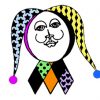
2024 Rose Availability List
-
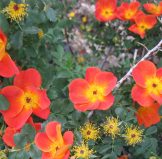
Austrian Copper
Above and Beyond
- Austrian Copper – (f. bicolor)
- Autumn Damask
- Autumn Sunblaze
- Banshee
- Bridal Sunblaze
- Brilliant Veranda
- Burgundy Ice
- Campfire
- Carefree Delight
- Carefree Spirit
- Carefree Wonder
- Celestial Night
- Champlain
- Charles Darwin
- Coral Cove
-
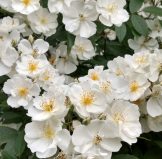
Darlow’s Enigma
Cream Veranda
- Darlow’s Enigma
- Denver’s Dream
- Dortmond
- Double Knockout
- Earth Angel
- Emily Carr
- Fairmount Proserpine
- Felix Leclerc
- Fire Meidiland
- Firecracker Kolorscape
-
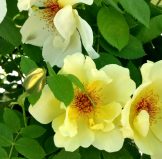
Golden Wings
Fred’s Loads
- Gertrude Jekyll
- The Gift
- Golden Opportunity
- Golden Wings
- Gourmet Popcorn
- Henry Kelsey
- Heritage
- Hope for Humanity
- Iceberg
- Jeanne Lajoie
- JoAn’s Pink Perpetual
- John Davis
- Lady In Red
- Laguna
- Lemon Fizz Kolorscape
-
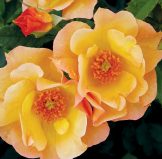
Morden Sunrise
Lilian Austin
- Mandarin Sunblaze
- Mary Rose
- Millie Walters
- Morden Sunrise
- Mountain Mignonette
- Petite Peach
- Quadra
- Red Ribbons
- Robusta
- Scarlet Meidiland
- Sophy’s Rose
- Sunbeam Veranda
- Sweetbriar Rose
- Sweet Chariot
-
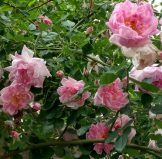
Victorian Memory
Tess of the d’Urbervilles
- Valentine’s Day
- Victorian Memory
- White Meidiland
- William Baffin
- Winchester Cathedral
- Winner’s Circle
- Zephirine Drouhin
Boulder-Dushanbe Teahouse Rose Garden
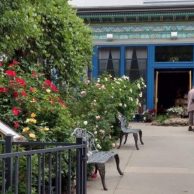 We would like to invite you to visit the Boulder-Dushanbe Teahouse Rose Garden in downtown Boulder across from the city park. The unique treasure of an intricately handcrafted, traditional Tajik Teahouse was gifted to the city of Boulder by the citizens of Dushanbe, Tajikistan, one of Boulder’s Sister Cities, in 1988. In time, the design of the structure was amended to be able to house a restaurant business, construction was completed, and the Teahouse opened in spring of 1998. Both the inside and outside of this fabulous building are elaborately adorned with colorful carved, painted and sculpted elements, mostly traditional, plus some contemporary artistry.
We would like to invite you to visit the Boulder-Dushanbe Teahouse Rose Garden in downtown Boulder across from the city park. The unique treasure of an intricately handcrafted, traditional Tajik Teahouse was gifted to the city of Boulder by the citizens of Dushanbe, Tajikistan, one of Boulder’s Sister Cities, in 1988. In time, the design of the structure was amended to be able to house a restaurant business, construction was completed, and the Teahouse opened in spring of 1998. Both the inside and outside of this fabulous building are elaborately adorned with colorful carved, painted and sculpted elements, mostly traditional, plus some contemporary artistry.
[Read More]
Springtime Pruning for Roses & Flowering Shrubs
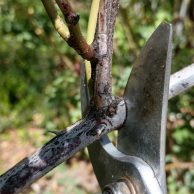 We recently passed Boulder Valley’s “average last frost” date (May 9).With all this rain, it sure feels like Spring! Lots of gardeners are asking if it’s safe to prune now, especially roses and shrubs. The answer is YES! But…..
We recently passed Boulder Valley’s “average last frost” date (May 9).With all this rain, it sure feels like Spring! Lots of gardeners are asking if it’s safe to prune now, especially roses and shrubs. The answer is YES! But…..
Pay attention to the characteristics of the particular shrubs and roses you’re thinking of pruning. [Read More]
Native Plants We Often Have for Sale
These are native plants that we often have for sale. Availability does change every year, but we grow and buy a wide variety of natives because they are so successful in our gardens.
KEY: t = tree, s = shrub, v = vine, gr = grass, gc = ground cover, p = perennial,
b = biennial, a = annual
Abronia fragrans (Sand Verbena) (p)
Acer glabrum (Rocky Mt. Maple) (t)
Acer grandidentatum (Bigtooth Maple) (t)
Achillea lanulosa (Native White Yarrow) (p)
Agastache cana (Hummingbird Mint) (p)
Agave parryi (Hardy Century Plant) (s)[Read More]
Native Plants In Harlequin’s Gardens Display Gardens
Achillea lanulosa (Achillea millefolium var. lanulosa) (Yarrow)
Agave havardii (Havard’s Century Plant)
Agave parryi neomexicana (New Mexico Century Plant)
Amelanchier alnifolia (Serviceberry)
Amorpha canescens (Leadplant)
Amorpha fruticosa (False Indigo)[Read More]
Eve’s Favorite Fragrant Roses
These are among our favorite fragrant roses. While we grow and sell many of these, they are not always ready to be put out for sale, and quantities are always limited! Come by and view our current selection, and check our 2024 Rose list.
-
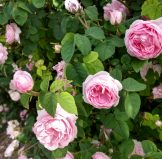
Banshee Rose
“Banshee” (found) Z 4, dbl pink 2″ early & long-blooming May-June, rich sweet damask fragrance; large shrub or climber, no die-back, very disease resistant, very tough & tolerant of low water, poor soil, shade, once established. Distinctive matte foliage, fall color- purple, orange. Common in old neighborhoods all along the Front Range.Not terribly prickly. Cut armloads for big fragrant spring bouquets!
- “Broadway Perpetual” (found, Boulder) Z 5 (4?) Large dbl strong pink quartered, deep old-rose perfume, spring & fall, sporadic in between. Good cut-flower. Seems somewhat shade-tolerant. Strong arching growth to 7’. Potential climber? Healthy foliage, moderately prickly.
-

Fairmont Proserpine, courtesy High Country Roses
“Fairmount Proserpine” (found, Denver)
- Abraham Darby (English) Z 4-5. Large, dbl, cupped, pink shading to apricot, repeats very well, strong scent, old-rose/fruity, good cut-flower. Heavy blooms are sometimes pendulous. Large, bushy shrub 5-6’ x 5-6’. Glossy disease-resistant foliage, stout canes are moderately prickly.
- Alchymist (Lg. Flowered Climber, lg.shrub) Blooms very large, warm apricot shades, very double, looks English, very fragrant, haven’t grown.
- Apothecary’s Rose (Gallica) Z 3. Very old; semidouble deep pink blooms in late spring on thin, erect prickly canes to 4’. Delicious sweet old-rose perfume. Tolerates some shade but may mildew. Perfect for herb garden.
- Baronne Prevost (Hyb. Perpetual) France, 1842. Z 5 (4?) Fat globular buds open to large 4″, flat, very double, loosely quartered deep “rose-pink” blooms with rich damask perfume, repeats well through season. Rather thorny, large arching shrub to 6’x6’ or more. Good for wrapping on pillar, pegging, self-pegging, or climbing.
- Cl. American Beauty (Lg. Fl. Climber) 1909 USA, Wichurana hyb. Z4 Large blooms are double, deep pink, paler on undersides, borne in small clusters on longish stems, strong Damask scent. In 1940’s considered the most fragrant climbing rose. Leaves dense & glossy, healthy. Vigorous growth to ~10’, tolerates some shade, neglect; profuse in June, sporadic repeat (esp. in cool summers).
- Constance Spry (English) Bounteous, very large double pink flowers in late spring on a large arching shrub easily used for draping or climbing. Bred from the Gallica ‘Belle Isis’. Fragrance includes a hit of ‘myrrh’, present in a number of David Austin’s English roses.
-

Darlow’s Enigma
Darlow’s Enigma (Cl. Hyb. Musk ?) Vigorous large shrub or climber of unknown origin with very disease-resistant, handsome glossy foliage. Small white semidouble flowers in clusters, borne throughout the season , are very sweetly scented. Very shade-tolerant. Zone 4.
- Desiree Parmentier (found Gallica) Probably incorrectly identified as Desiree, this rose is found in old neighborhoods throughout the Denver metro area. Healthy, soft apple-green foliage on a shade-tolerant, suckering shrub to 3’ in sun and taller in shade. Flowers are unique – many deep pink petals tightly packed, radiating out from conspicuous green ‘eye’, forming a dome–shaped blossom. Blooms in June. Rich Old-Rose perfume. Buds also unique, appearing to have had their tops cut off. Blooms are produced singly, not in clusters, making it ideal for cutting. Thrives on neglect once established. No die-back in the Denver-Boulder area. Prickles are numerous but very short and non-threatening.
- Fair Bianca (English) Lovely very double white blooms of old-rose style open flat and are produced in several flushes through the season on a shrub to 3’. Not very vigorous, but the fragrance is unique, including elements of licorice, lemon and myrrh.
- Felicite Parmentier (Alba Hyb.) An outstanding, classic old rose, with compact, bushy growth to 4-5’ tall. Foliage is matte, slightly greyish green, and completely healthy, even in considerable shade. Blooms are small (1 1/2″), blush pink, double and densely double, borne in small clusters, with exquisite fragrance that seems to match its appearance perfectly. No winter die-back in our area, hardy to at least Zone 4.
- Gertrude Jekyll (English) Bred from the Portland rose ‘Compte de Chambord’, which may be a better rose. Gertrude got HUGE in my garden, to 9’ tall, likes to bloom mostly at the top of the canes, hasn’t repeated very well, and is incredibly well-armed. Nevertheless, she’s worth growing for her fabulously fragrant, large, oldfashioned, double,flat pink blooms. Best grown with strict discipline (hard pruning) and protective armor.
- Golden Celebration (English)
-

Golden Wings
Golden Wings (Shrub) A healthy, vigorous, open shrub to 5-6’ tall and wide, with large, almost single lemon yellow blossoms accented by showy dark red stamens. The petals fade quickly to white in our strong sun. Blooms all season. Keep dead-headed ‘til August , then allow it to form attractive red hips. Hardy to Zone 5, maybe 4.
- Heritage (English)
- Jude the Obscure (English) Weird name for a gorgeous flower, double, globular, shading from cream to yellow to apricot, sometimes pinkish. Flowers ball in wet or very hot weather. Blooms occur in clusters of 3 to 8. Strong fruity fragrance with elements of peach, mango, etc. With disciplinary pruning, the shrub will be 5’x5’. Bright green foliage is moderately disease-resistant; Keep dead-headed to ensure good repeat.
- Konigen von Danemark (Alba) The deepest colored of the Albas, Konigen bears medium pink, very double, 2″ flowers in June, blessed with delicious Old Rose fragrance. Totally healthy, matte grey-green foliage on arching canes to about 5’. Tolerates some shade. Hardy to Zone 4.
- Louise Odier (Bourbon) Fully double, 2″ camellia-like pink blossoms are borne in great profusion in late spring, and again in pretty good numbers through the season. The fragrance is rich Old Rose. The shrub is very vigorous, theoretically to 5’x5′, but mine is 9’x9′, suggesting the need for a pillar, trellis or wall, or strong pruning. Mine never suffers any die-back, and is pretty healthy. Repeat bloom is best if you deadhead until some time in August. Pretty thorny, but not as bad as Gertrude.
- Madame Hardy (Damask) One of the most choice Old roses. Beautiful, medium-sized pure white blooms with a green button eye on a robust, upright shrub to 5’-6’ tall. Very fragrant. June blooming, Zone 4.
- Madame Isaac Pereire (Bourbon) France, 1881. Large, purplish, deep pink, cupped blooms are sumptuous in their appearance and perfume. Blooms are carried on short laterals from strong, large canes, and can be used as a climber to about 7’. Blooms are best if protected from very hot sun, but the plant is not really shade-tolerant. Hardy to Zone 5.
- Mister Lincoln (Hyb. Tea) Black-red buds open to cherry red, richly fragrant at all stages. Blooms are large (4-4.5″), double, scrolled, high-centered, good cut. “Bush is upright and almost naturally urn-shaped, to 3’ or taller. Susceptible to mildew. Robust grower, reliable bloomer.” I haven’t grown this one yet.
-

Morden Sunrise
Morden Sunrise (Canadian Shrub) A compact shrub, to about 3’x3’. Seems pretty tough in our test/display garden. Semi-double flowers open from orange buds, are 2 1/2 to 3″wide and shade from soft, tawny yellow to apricot pink, to orange. Moderately strong Tea rose fragrance is unusual for a Canadian rose, which are generally scentless. Hardy to Zone 3, almost continuous blooming.
- Nuits de Young (Moss)Laffay, France 1845. A must for its fabulously purple flowers, this rose has also been called “Old Black”. Flowers are almost double, very fragrant, with velvety maroon-purple petals emphasized by golden stamens. Mossing on buds and flower stems has a pleasant lemony pine scent when rubbed. The shrub is compact and erect, to 3 or 4’ tall, and suckers. Foliage is small and dark green. We found this rose growing in Boulder’s Columbia Cemetery, where it has survived mowing, drought, and complete neglect for at least 65 years.
- Pink Peace (Hyb. Tea) France, 1959. Enormous, intensely fragrant, very bright pink, double, with somewhat old-fashioned form, sumptuous flowers throughout the season on an upright bush. A slow starter, not exactly vigorous, but worthwhile for the blooms, which are long-lasting when cut. We know one bush in Paonia that’s about 40 years old, 4.5’.
- Reine des Violettes (Hyb. Perpetual)
-

Rosa spinosissima
Rosa spinosissima (Scotsbrier) (Species) My favorite species rose, as it perfumes my gardening hours with its strong, very sweet scent – one of the few fragrances that really carry in our dry air. The 4’ tall shrub is shade tolerant, and has very small leaves on gracefully arching canes that are covered with the lovely pure white single blooms for about 2 1/2 weeks in May. Hardy to Zone 3.
- Rosa Mundi (Gallica) Ancient, sport of Apothecary’s Rose. Named for Rosamond Clifford, mistress to Henry II. Identical in all respects to Apothecary’s, except: Dramatic semi-dbl blossoms blush-white randomly striped & splashed with crimson & pink. Petals dry beautifully for potpouri.
-

Rose de Rescht
Rose de Rescht (Portland or Damask Perpetual) A very distictive Old Rose, supposedly discovered in Iran. The flowers are small, 1 1/2″ or slightly larger, rich fuschia-red with strong purple tints, aging to magenta, very double, tightly formed rosettes, almost pom-poms, produced in small clusters amid lots of foliage. Exceptional strong Damask fragrance. Excellent repeat. The shrub is healthy, compact and bushy, to 4-5’ tall and wide. Canes are quite prickly. Hardy to Zone 4.
- Rose du Roi (Portland or Hyb.Perpetual) Lelieur, France 1815. This is a rose with a story. Bred by a French nobleman loyal to Napoleon (the second one), it was appropriated and re-named by the King, Henri XV, when he regained power. It’s also an important rose for having introduced “red” color to rose breeding in 19th century Europe. The plant is compact and bushy, growing 3-4’ tall and wide, with large leaves (I’ve noticed they’re light green in spring, with later growth being dark green with grey undersides), and prickly canes. The flowers are fabulous, fairly large, double, red mottled purple with pink reverse, loosely formed when open, and very richly scented. Repeats, with especially good display in early fall. Hardy to Zone 4-5.
-

Sharifa Asma
Sharifa Asma (English) Slow to establish, but worth the wait. Blooms are large, double, delicate shell pink, cupped, and blessed with a strong Old-rose and fruity (litchi) fragrance. Leaves are dark green, slightly leathery, and healthy as long as the shrub is not in too much shade. Growth is upright to 4’.
- Stanwell Perpetual (Hyb. Spinosissima) The earliest repeat-blooming rose to begin flowering in my garden, vying for 1st with Reine des Violettes. Bred from R. spinosissima and Autumn Damask. Canes are very prickly, arching, dark red, clothed in very fine-textured foliage, and loaded with blooms in several flushes through the season. Flowers are double, small to medium-sized, blush pink opening flat and fading to white. Very sweetly scented, with characteristics of both parents. Growth is awkward the first few years, but then fills out nicely. Hardy to Zone 4.
- Sweet Chariot (Mini) Tall for a miniature, to 2’. Small foliage and small pom-pom flowers in large clusters, unusual purple-pink color and lovely fragrance. Blooms repeatedly through season. Hardy to Zone 5.
- Sydonie (Hyb. Perpetual) Extremely reliable repeat bloom, exquisite Damask fragrance, unique flower form. Flowers are “rose-pink”, 2-2 1/2″ very double, very quartered, with strongly in-curved center petals. They are borne on very prickly arching canes on a bush that’s supposed to be 3 1/2’ tall and wide. NOT. Mine is 8’x8’ and I’m planning to do some hard pruning. Hardy to Zone 4-5, I’ve never had any winter die-back.
- Tradescant (English) I haven’t grown this one yet, but I’ve seen it elsewhere and loved the blooms. They are velvety black-red, very double, opening flat and quartered, 2-2 1/2″ wide, with a powerful Old Rose fragrance. Good cut-flower, holding its shape and color several days. Hardy to Zone 5. Reportedly grows best with hot summer weather.
- Wise Portia (English) Compact, to 2 1/2’, I grow 2 of these planted very close together to form one shrub. Very large double flowers are a unique raspberry red, rosette shaped, with uniquely pointed, lotus-like petals. Heavy-blooming, richly scented, borne singly or in sprays. Excellent repeat if kept dead-headed ‘til late summer. Then it will form large, red hips. Modern-looking medium green foliage. Provide good light and good air circulation.
- Zephirine Drouhin (Climbing Bourbon) Bizot, France 1868. Hardy to Zone 5-6. Our strain is definitely hardy in Boulder/Denver. Completely thornless, somewhat shade-tolerant, vigorous tall shrub or climber to 12’ on wall or arbor. New foliage and canes are burgundy colored. Flowers are loosely double, warm deep pink, medium-sized, profuse in spring and repeats regularly into autumn. Strongly scented- fruity Old-Rose.
Some fragrant roses to try at higher elevations:
Alba Semi-plena
Alba Suaveolens
Maiden’s Blush
Chloris
Konigen von Danemark
Rosa spinosissima
Rosa rugosa alba
Rosa rugosa ‘Magnifica’
Metis
Banshee
Gallica roses
Centifolia roses
Therese Bugnet
Morden Sunrise
Rugosa roses
Canadian Roses for Colorado
The Canadians, like their English and French ancestors, have a great love of roses. However much of Canada is in zones 4, 3 and even zone 2. Therefore many of the hybrid tea and floribunda roses bred in modern times have not been tough enough for Canadian gardeners. So the Canadians set their own federal agriculture department to work on breeding roses that succeed in Canada. Not only do these roses do well north of our border, they are very successful in Colorado, even in our higher elevation environments. Our 10-20 below zero winters and dramatic temperature changes can kill or significantly injure more tender roses like the hybrid teas and floribundas. So gardeners in Colorado who don’t have time to remove large masses of dead canes, hill soil around the canes to protect them for winter, and who have less inclination to spray and fertilize frequently, find the Canadian-bred roses provide a rewarding and easy-care alternative.[Read More]
Climbing Roses for Colorado
Many Colorado gardeners have been frustrated in their attempts to grow climbing roses. The main problem seems to be that the tall canes die back and though they may bloom, they look like shrubs, not climbers. We are green with envy of the European and Californian gardens with roses cascading over and festooning pillars, walls and bowers. Why can’t we achieve this? I think we can, but not without a very discriminating approach. First of all we must realize that our cold temperatures and especially the rapid cold-hot-cold changes, and our drying winter winds are death to all but the hardiest rose canes.
Henry Kelsey Rose
Henry Kelsey (1984 Kordesii cross) is an Explorer Series rose from Ag. Canada that is hardy to Zone 3 and is considered by many to be the best red-flowered climber for cold climates. It is very vigorous and grows strongly even in lean soils. Whereas it can be grown as a low arching shrub to 4’, it excels as a short climber to 8’-10’ and looks especially good trained down a split-rail fence. The flowers are semi-double with prominent golden stamens, opening a luscious deep red and fading to a pinker medium red. The fragrance is light but pleasant and the clusters of flowers repeat from June until frost. Where I have grown it in a very low water area over the last five years it has performed well and has not died back on the trellis, but repeat flowering is intermittent rather than continuous. One of the truths of xeriscape is that not all plants that grow well on low water, flower as well. Sometimes just one or two deep waterings during bloom time will make a big difference in flower production.[Read More]
Cold-Hardy Climbers
At the end of last season I wrote about how to succeed with climbing roses in Colorado. Besides winter watering and careful siting out of the worst wind, the most important factor is the choice of very cold hardy roses that are grown on their own roots. The books may say we are zone 5 but when the temperature drops from 50 at noon to 5 at two a.m., we better hope our rose is zone 4 or even zone 3 hardy. With climbers this is even more true because if the canes die back to two feet the rose may still bloom but it won’t function as a climber that year. Here are a few of the toughest and most cold-hardy climbing roses for Colorado. [Read More]
Roses that Survive and Thrive in Colorado
After last November’s 77 degree cold plunge to 13 degrees below zero, most roses suffered die-back, some died to the ground and some died completely. But there were roses that had only minimal damage and some that will bounce back with a good show of vigorous growth and generous flowering this year. Here are some observations and conclusions about growing sustainable roses in Colorado.
Roses are cane shrubs, similar to blackberries and raspberries. Their wood has a pithy center and is not as hard or as strong as a lilac. Consequently roses are more vulnerable to insects, diseases, desiccation and cold, but another consequence is that they can grow and regrow much faster than woody shrubs like lilac and viburnum.[Read More]
